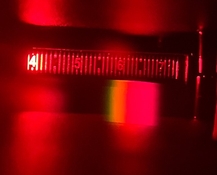I've had some decent success with ammonia after a lot of trial and error. The process of converting silver is pretty well-described in the literature and you'll quickly get the hang of adding smaller and smaller amounts until it's one drop at a time, then suddenly clears. Good ventilation is of course key.
I noodle wash about 90 minutes in 8-10 changes of filtered tap water, and add extra KBr before the second digestion, which helps control fog.
I'd recommend making your first batch without any dyes or sensitizers. For some reason, erythrosine seems to fog my ammoniacal emulsions quite badly, and I wasted quite a few batches before isolating that variable!
I had a brain-blast last night. I haven't *fully* confirmed anything yet, but I've got a theory.
I had issues with ammoniacal emulsions fogging a lot, and I always used erythrosine for them too. Regular ammonia-bromide emulsions seemed fine, at the time. But later on, I noticed that when testing gold/sulfur sensitization, I would get some pretty bad fog that would absolutely nuke the emulsion as the sensitization carried out.
I started to suspect my "safelights" might be leaking a little bit of green. I just use cheapy wifi RGB bulbs set to red. They never seemed to give me any problems in the past, but it's been a few years since I worked with paper or anything "normal". I started keeping them at 1% while taking samples, and turning them off entirely in-between, and the mystery fog disappeared.
Last night I was curious, and held up a $10 spectroscope to each bulb, and sure enough there was a good amount of yellow light in all of them, and a couple even had some green light visible.
None of this was scientific enough to really say the bulbs are the 100% culprit here, as I changed a bunch of other small stuff with my workflows at the same time. But it would make a lot of sense if this was the case.
I ordered some "deep red" LED strips off of eBay last night, and I'll update when I can test those out.












